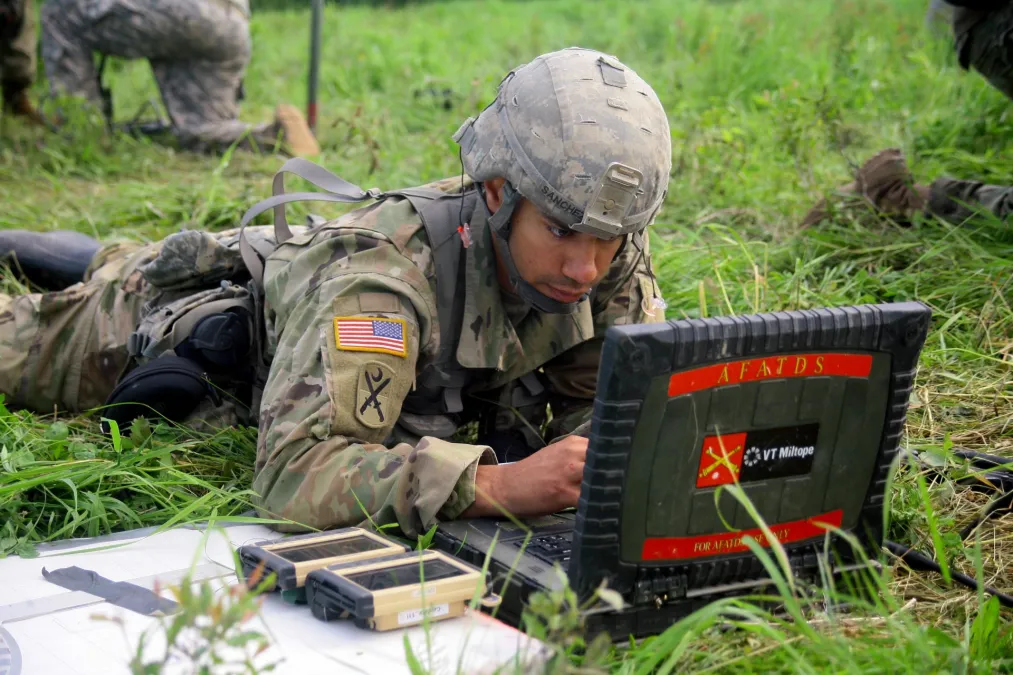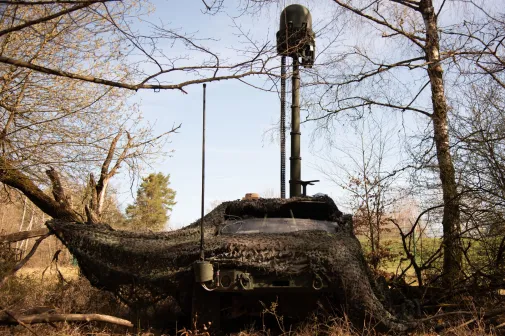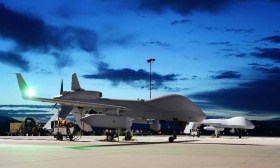Army planning new start for theater-level signals intelligence

The Army is creating a new program of record for fiscal 2025 aimed at theater-level signals intelligence.
The Theater Signals Intelligence System, or TSIG, has been designated to transition into a program of record and will be a new start for the Army in 2025.
“That’s really to provide the tactical commanders at echelon above corps with a forward deployable and remotely or even locally controlled signals intelligence systems and supporting potential contingency operations,” Brig. Gen. Wayne “Ed” Barker, program executive officer for intelligence, electronic warfare and sensors, told reporters during a media call Tuesday. “We were designated as the office of primary responsibility for that effort this year and that’s an acquisition new start that we’re looking at in FY 25.”
With the shift to what the Pentagon refers to as great power competition, the military will need to fight larger and more sophisticated forces across greater distances. As a result, the Army is placing greater importance on capabilities and procedures at higher echelons such as division, corps and even the theater Army as opposed to the brigade, which was the primary fighting unit during the counterinsurgency fight of the last 20 years.
Ken Strayer, project manager for electronic warfare and cyber at Program Executive Office for Intelligence, Electronic Warfare and Sensors, explained that the system is essentially a conglomeration of existing capabilities that have been in the field and support theater intelligence collection.
“These are systems that have been built in the [quick reaction capability, or QRC] world, are in operation, and starting in FY 25, we’re going to collect those QRCs up into a new program or record for the purposes of sustainment and continued modernization,” Strayer said, referring to systems that were built rapidly to address specific capability needs relative to threats forces face in the field.
According to the PEO, TSIG is “a system of systems comprised of persistent, non-persistent and survey signals SIGINT systems with a novel network transport layer. Material solutions include persistent (Picket Line) and non-persistent (TROJAN Soldier Portable Remote Intelligence Group – TSPRING) variants and survey (Survey Collection and Analysis Mobile Platform – SCAMP).”
Congress still has not passed a budget for the current fiscal year and the government is running under a continuing resolution, which means funding levels have stayed the same as the prior year. Under a continuing resolution, the Pentagon is not allowed to begin new start programs.
“It’s always a challenge whenever you have a new start that’s occurring in the same year that you have some type of CR,” Barker said.
“The challenge always becomes you get your money late in the year and when it comes to how those dollars are aligned from an execution standpoint, the further you get into the year, the more of a challenge it can be from the ability to be able to execute,” he continued. “Then the other challenge associated with that is the longer it goes, the more likelihood you have of your dollars not being aligned properly.”
Barker also outlined other new starts his office intends to undertake in the coming years.
One is called the Modular Electronic Spectrum System, or MEMSS, which Barker said supports command post survivability through employing techniques in the spectrum to confuse and deceive the adversary while also disrupting their targeting cycle.
He added that this is an important capability within the European theater right now. Dating back to its 2014 incursion into Ukraine, Russia has demonstrated an adept ability to be able to target command posts based solely on their electromagnetic signature, locating their position and either jamming them or firing lethal munitions on their position.
This was an instructive lesson for the Army at the time, leading to an overhaul in how the Army operates its command posts. Top officials have, as a result, described a need to be faster and smaller from a physical standpoint to move quicker on the battlefield, and possess a lower electromagnetic signature.
MEMSS will be a new start in fiscal 2026.
Another capability is called the Spectrum Situational Awareness System, or S2AS, which will be a new start in fiscal year 2025 and is envisioned to be a commercial off-the-shelf solution that will provide sensing and visualization of what units look like in the spectrum.
Barker said this would allow commanders to be able to sense and report in real-time their command post signature, sources of electromagnetic interference – either from coalition partners or the enemy – and what threat emissions look like.
This capability will be critical to allowing units to understand their own electronic footprint.
Updated on Dec. 7, 2023 at 11 AM: A previous version of this story included information from a Program Executive Office for Intelligence, Electronic Warfare and Sensors website that the PEO later said was inaccurate. This story has been updated to reflect the new information that was provided to DefenseScoop.






